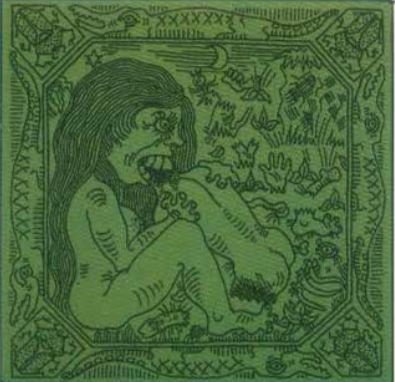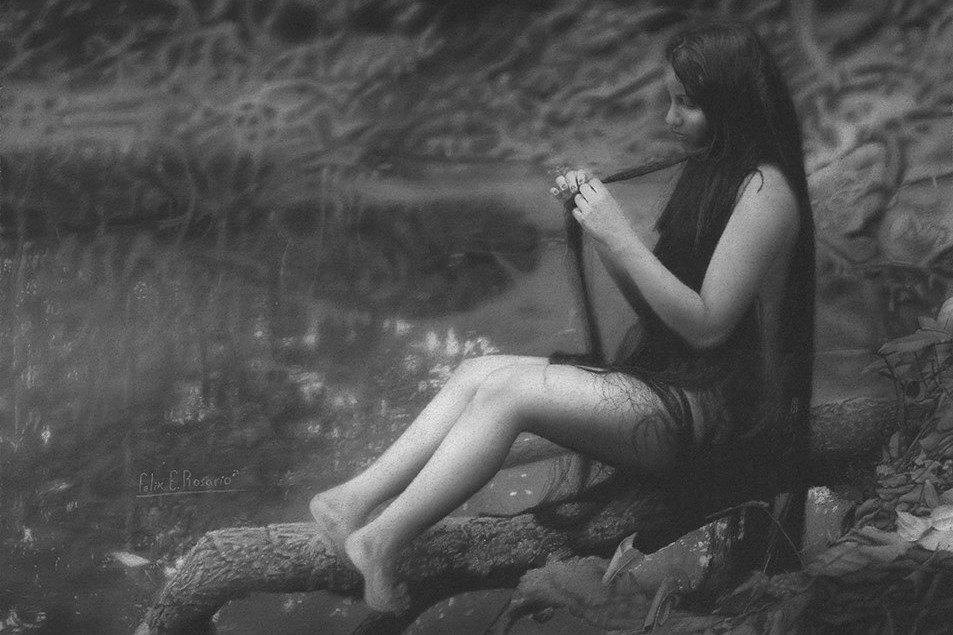Black Aggie of Druid Ridge Cemetery, Maryland
In 1925 a life-size bronze statue was erected at the memorial site for General Felix Agnus. It portrayed the visage of a grief-stricken woman, seated and shrouded, her face covered in shadows. Becoming known as Black Aggie, it wasn’t long before myths of Black Aggie coming to life with murderous intent began to spread fear throughout Baltimore County, Maryland.
Today we’re looking at the Black Aggie statue of Druid Ridge Cemetery in Pikesville, Maryland.
In 1886 American socialite and budding photographer Marion Adams tragically took her own life after suffering a year-long bout of depression due to her father’s death. Devastated, her husband and grandson to John Quincy Adams, Henry Adams wrote in a letter to a friend, “During the last eighteen months I have not had the good luck to attend my own funeral, but with that exception, I have buried pretty nearly everything I lived for.”
Shortly after, Henry commissioned famous sculptor Augustus Saint-Gaudens to create a memorial in her honor reflecting his loss.
The Original Statue
After four years Augustus Saint-Gaudens unveiled the Adams Memorial at Rock Creek Cemetery in Washington, D.C. Almost immediately the memorial became a sort of tourist attraction with all captivated by the haunting gloom the statue emitted.
Many requested the meaning or even a name for the statue yet, Henry Adams refused to give either, eventually, those wondering took it upon themselves to name the statue Grief.
Soon requests from other sculptors came in asking to make copies of the Grief statue yet Henry Adams never wavered in his refusal. Unfortunately, this was another instance of others taking something into their own hands.
The Haunted Copy
In 1906 General Felix Agnus, a Civil War hero was deceived into believing he would be able to purchase a copy of the grief statue for his own memorial. In reality, the company he commissioned the statue from hired a Danish sculptor, Edward L.A Pausch to create the copy. In 1907 Pausch’s illegal copy was installed at the Druid Ridge Cemetery.
Though word spread and legal battles persisted for some time Henry Adams was reluctant to bring more attention to his late wife’s memorial eventually concluding Felix Agnus had suffered in the public eye enough. All was quiet until Felix Agnus’ death and burial in 1925.
The Statue Wakes
Quickly word of something off at the Druid Ridge Cemetery began to spread. It’s not known what was the first instance of a haunting, but various stories persisted. Now nicknamed Black Aggie, some began to wonder if the spirit of Felix Agnus’ wife, who died in 1922, had taken hold of the statue. Some claimed to see Black Aggie coming to life at midnight with tales of ghostly figures, the spirits of those buried in the cemetery, making their way to her.
But the spirits didn’t stay within the confines of the cemetery, staring at Black Aggie’s eyes at midnight would cause them to glow red. In some stories this marked you, allowing spirits to follow you home and haunt you eventually leading to your death. Other stories say the red lights blinded those who dared to look too long.
Even just being in her presence at the stroke of midnight or in the glow of moonlight would be a death sentence. Pregnant women were warned of suffering a miscarriage if they came too close to the statue. And if you dared take a seat on Black Aggie’s lap, you would soon be embraced by her metallic arms and crushed to death or dragged to hell.
The urban legends brought much-unwanted attention to the cemetery with it being used as part of hazing initiations for sororities and fraternities. Myths say college students would dare each other to spend the night at the foot of Black Aggie.
On one alleged night, two students watched as another was enveloped in a cloud of gray spirits before being crushed by the arms of Black Aggie.
Another story tells of a girl who refused to believe in the hauntings, venturing out alone into the cemetery towards Black Aggie. Hours later she would be found dead by the groundskeeper at the lap of the statue.
With all the attention the cemetery and Black Aggie became targets of graffiti and vandalism. One incident involved a man stealing a piece of Black Aggie, either a finger or her arm, and eventually being arrested with it in his trunk. His defense? Black Aggie ripped the piece off herself and told him to leave the cemetery with it.
Related Article: Black Angel of Death Statue at Oakland Cemetery, Iowa
Moving the Statue
Following this, in 1967 the Agnus family elected to donate the statue to the Smithsonian American Art Museum, although the museum was under the impression it was an authentic statue at the time. Eventually by 1996, Black Aggie had been moved to the courtyard of the Dolley Madison House in Washington D.C.
Black Aggie was an illegitimate unwanted copy of a statue that embodied grief. It was marred in controversy at its inception only to be tainted with myths and urban legends of death and hauntings. Today, at her new resting place in Washington D.C, there are no reports of the evil that engulfed her image, and the previous reports of haunted never produced any evidence.
But at Druid Ridge Cemetery? Well, that’s another story for another time as there are some alleged reports of spirits and possibly another statue looking for victims.
So, how about you? Would you have spent a night at the feet of Black Aggie?













